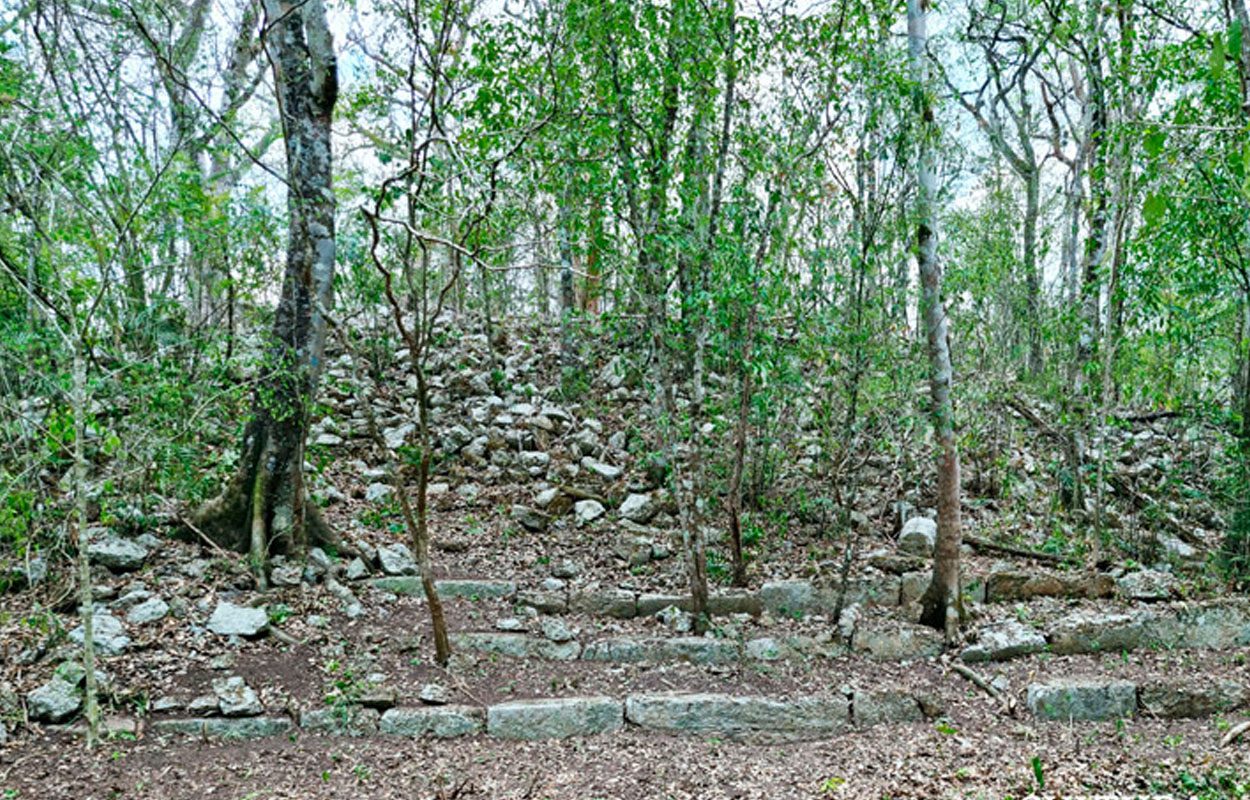Archaeologists from the National Institute of Anthropology and History (INAH) have announced the discovery of a previously unknown Maya city in the forests of the Balamkú ecological reserve, Mexico.
The city has been named Ocomtún (meaning “stone column”) due to numerous cylindrical stone columns that have been uncovered throughout the interior.
Archaeologists made the discovery as part of a project to document and map unexplored areas of central Campache using high resolution photography and Light Detection and Ranging (LiDar).
LiDar is a method of remote sensing using light in the form of a pulsed laser to measure ranges (variable distances) to the Earth. The differences in the laser return times and measurements of the wavelengths can be used to compile a 3-D digital map of the landscape, removing obscuring features such as tree canopies that could hide archaeological features.

The survey project revealed a nucleus of pre-Hispanic structures located on a peninsula and surrounded by wetlands. The site covers an areas of around 123.5 acres and mainly dates from around the Classic Period (AD 250-1000).
Various large buildings have been confirmed through a ground level inspection, including several pyramidal structures that are over 15 metres in height, plazas, elongated structures arranged in a concentric circle plan, and evidence of a ball game court.
A large causeway connects the southeastern part of the site to a cluster of buildings in the northwest where an 80 metre long rectangular acropolis is situated, along with a pyramid that rises 25 metres in height.

According to the researchers, the city underwent several alterations in the Terminal Classic period (AD 800-1000) with the construction of shrines, terraces and plazas that were used for ceremonial rituals.
By the 10th century AD, the population declined and the site was abandoned around the time of the Maya collapse, a period that saw the abandonment of many Maya cities in the southern Maya lowlands.
Header Image Credit : Ivan Ṡprajc







